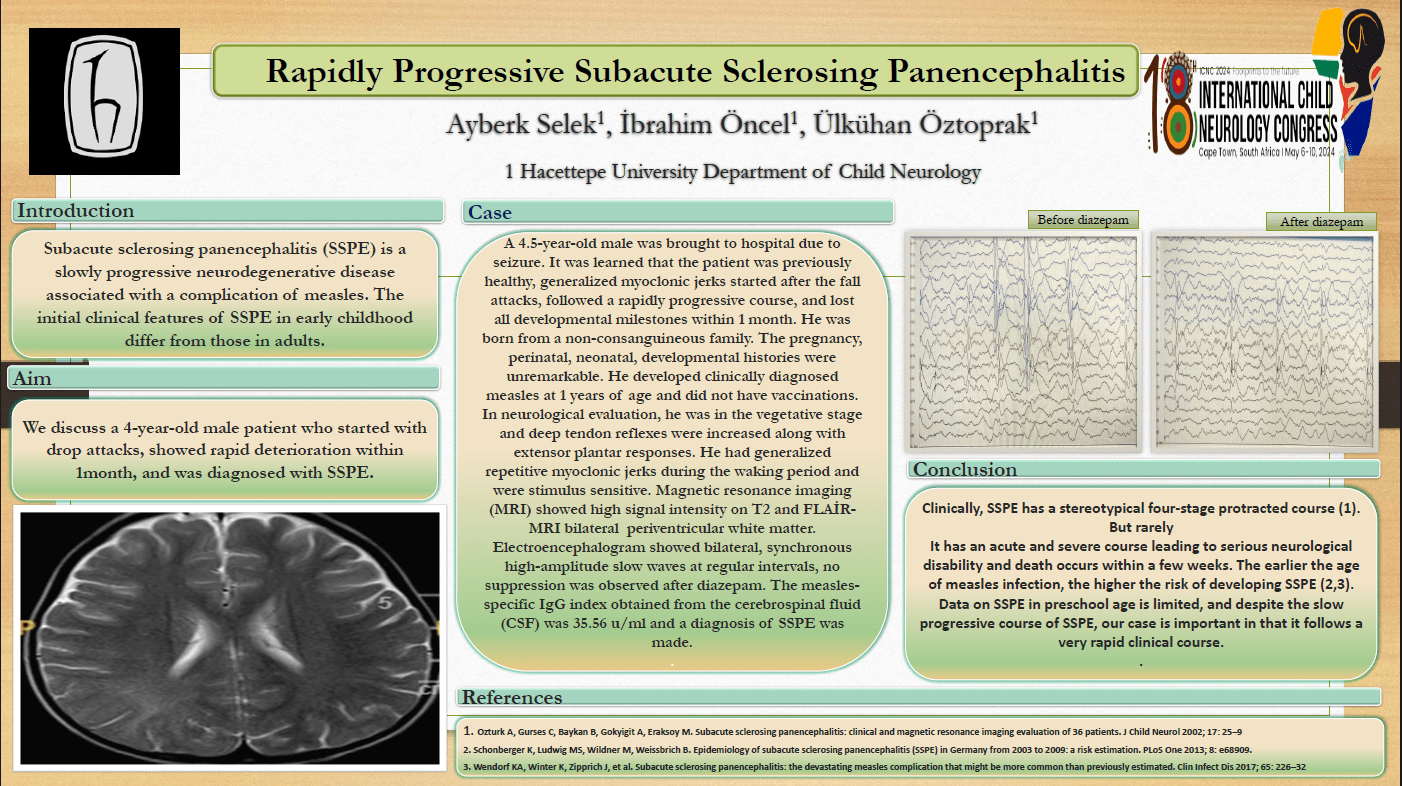Rapidly Progressive Subacute Sclerosing Panencephalitis
Rapidly Progressive Subacute Sclerosing Panencephalitis Introduction Subacute sclerosing panencephalitis (SSPE) is a slowly progressive neurodegenerative disease associated with a complication of measles. The initial clinical features of SSPE in early childhood differ from those in adults. Aim We discuss a 4-year-old male patient who started with drop attacks, showed rapid deterioration within 1month, and was diagnosed with SSPE. Methods Our study is a case report. Results A 4.5-year-old male was brought to hospital due to seizure. It was learned that the patient was previously healthy, generalized myoclonic jerks started after the fall attacks, followed a rapidly progressive course, and lost all developmental milestones within 1 month. He was born from a non-consanguineous family. The pregnancy, perinatal, neonatal, developmental histories were unremarkable. He developed clinically diagnosed measles at 1 years of age and did not have vaccinations. In neurological evaluation, he was in the vegetative stage and deep tendon reflexes were increased along with extensor plantar responses. He had generalized repetitive myoclonic jerks during the waking period and were stimulus sensitive. Magnetic resonance imaging (MRI) showed high signal intensity on T2 and FLAİR-MRI bilateral periventricular white matter. Electroencephalogram showed bilateral, synchronous high-amplitude slow waves at regular intervals, no suppression was observed after diazepam. The measles-specific IgG index obtained from the cerebrospinal fluid (CSF) was 35.56 u/ml and a diagnosis of SSPE was made. Data on SSPE in preschool age is limited, and despite the slow progressive course of SSPE, our case is important in that it follows very rapid clinical course.
Ayberk Selek
Hacettepe Faculty of Medicine
Turkey
Ibrahim Oncel
Hacettepe Faculty of Medicine
Turkey
Ulkühan Oztoprak
Hacettepe Faculty of Medicine
Turkey
